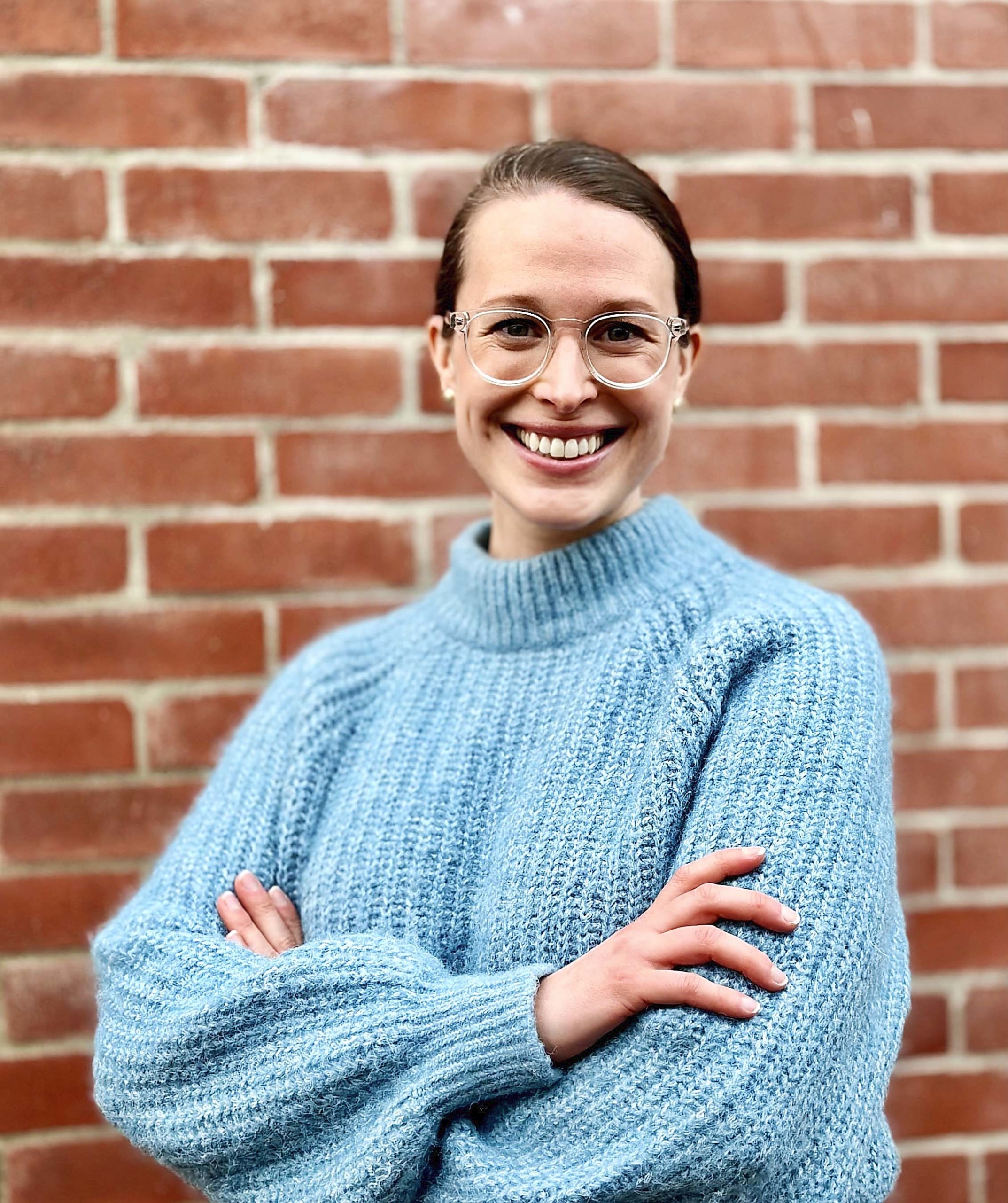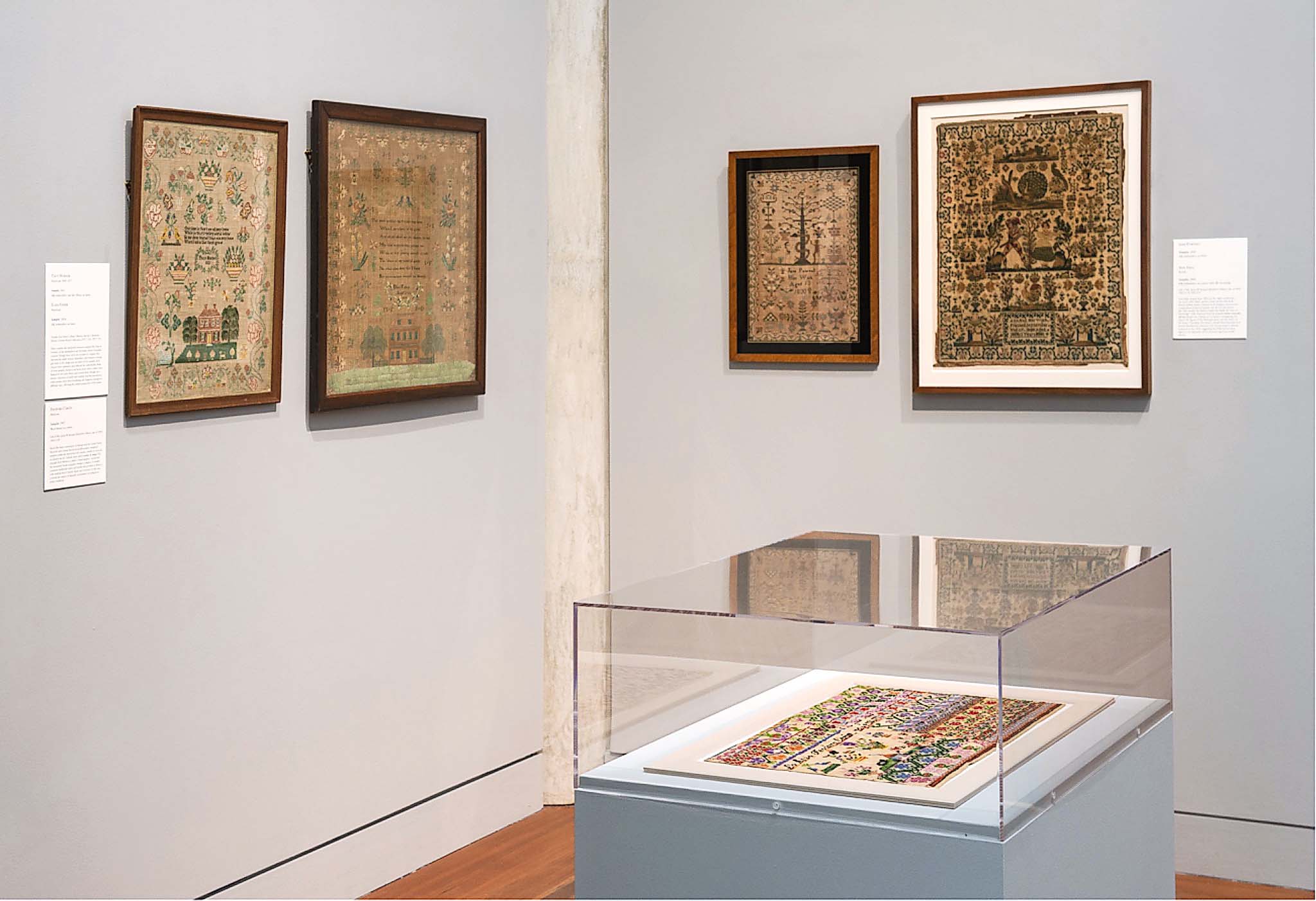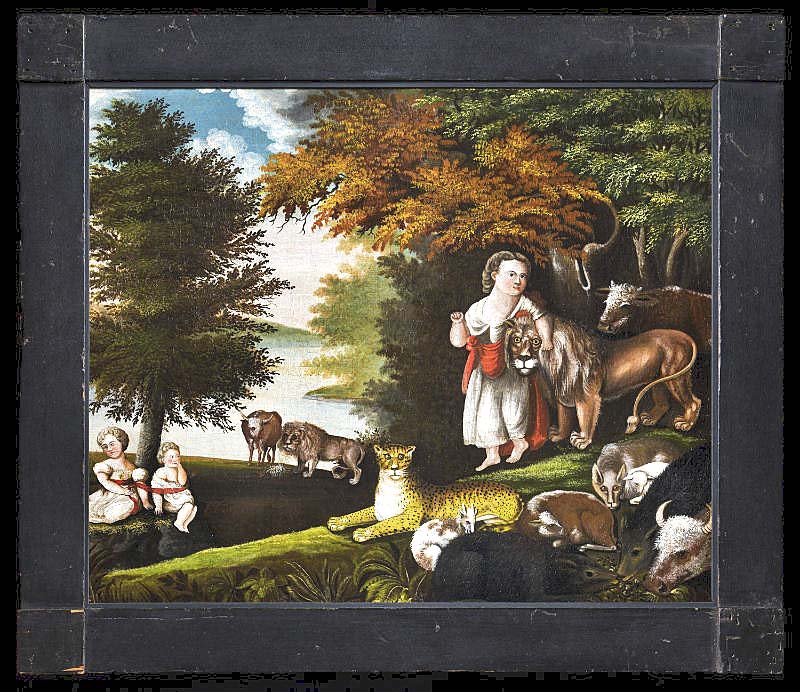
Caroline Culp, Warren Family assistant curator at the American Folk Art Museum. Photo courtesy Nilam Patel.
The American Folk Art Museum (AFAM) recently welcomed Dr Caroline Culp as the Warren Family assistant curator. Culp is a scholar of American art with specialties in colonial and early national painting and material culture, women artists and the history of portraiture. She has developed a curatorial practice centering community, collaboration and DEAI (diversity, equity, accessibility and inclusion) initiatives through positions held at the Frances Lehman Loeb Art Center of Vassar College, The Metropolitan Museum of Art and the Cantor Arts Center at Stanford University. For a two-year period beginning in September, Culp will contribute to research about the museum’s collection and share scholarship with the public through exhibition interpretation, publications, tours, programs and lectures. Antiques and The Arts Weekly checked in with Culp to discuss some of her previous projects, her move to AFAM and what comes next.
You have expertise in colonial and early American painting, material culture, women artists and the
history of portraiture. How did you get into these fields and areas of specialization?
There is a photograph from the early 1950s of my great grandparents, who I never met. They’re posed in their living room in front of an old portrait. As I was growing up, the same portrait hung in the dining room of my childhood home in central Oklahoma. We’ve never known the sitter’s identity or who might have painted him. But from his position over our sideboard, he seemed to monitor every birthday and holiday meal. In a part of the United States where antique paintings were atypical and even strange, I credit this enigmatic portrait with my deep sense of connection to early American art — to the people, and the culture, and especially to the objects of that time. The portrait has been passed down between succeeding generations of Bartlett women, along with a deep love for the arts and an appreciation for old things.
My career as an art historian has emerged from these early influences — the culmination of a decades-long curiosity about the life and afterlife of colonial American objects. I gravitated towards these subjects in my academic studies, first at Wake Forest University in Winston-Salem, N.C., and later in graduate school at Stanford University. Since earning my PhD in 2021, I’ve published scholarship and curated exhibitions on a wide range of topics: from women’s sewing samplers to John Singleton Copley; Nineteenth Century American miniature landscapes to Caroline Clowes, one of the earliest professional female artists in New York’s Hudson Valley, where I live today. In these projects and others, my goal is to expand access to art and advocate for its ability to engage with today’s most vital questions.

“L’espoir du retour (The hope of return)” by Frances Vacher, after Marguerite Gérard, 1812, silk embroidery on fine canvas with painted face, hands and letter. Frances Lehman Loeb Art Center, Vassar College. Gift of Anne Prince Marsh, class of 1953, Elizabeth Prince Collins, class of 1955, in memory of Margaretta Tuttle Prince, class of 1927, 2022.13. Photo courtesy the Frances Lehman Loeb Art Center.
What were some of the projects you worked on in your previous roles?
Before joining the American Folk Art Museum, I taught American art courses to undergraduates at Vassar College and worked as a guest curator at the Frances Lehman Loeb Art Center. Last year, I had the privilege of curating the exhibition, “Between the Lines: Innovation and Expression in Women’s Sewing Samplers.” Offering a fresh new look at a medium traditionally dismissed as “women’s work,” the 30-object show explored how women makers from across Europe and the Americas expressed creativity and individuality from within the confines of this formulaic medium. By reconsidering needlework and its role in young women’s education, the exhibition interrogated received histories of art and craft to offer new understandings of American and European visual cultures and the position of women therein.
One of my favorite objects in the exhibition was not a sampler, but rather an embroidered picture. Made by a young girl in New Jersey in 1812, it is a bravura performance of needleworking skill. In a carefully rendered interior scene, Frances Vacher depicts a young woman thinking about a letter from an absent loved one. In her left hand she holds his letter and portrait, hopeful for his return. Her right rests on a globe — a symbol of his travels abroad. Except for the hands, face and letter, which are painted, Vacher’s picture is made of stitched, shimmering and sumptuously colored silk threads. In a fascinating turn, my research revealed that Vacher copied the scene from a painting of the same name by the French artist Marguerite Gérard. Evoking the subtly blended brushstrokes of Gérard’s painting, Vacher elevated the medium of embroidery to the realm of fine art.
You mentioned that you curated exhibitions on miniature-scaled landscapes and Caroline Clowes. Do you have any other favorite exhibition pieces from your past projects?
A favorite work by Caroline Clowes — one of the first professional female artists working in New York’s Hudson Valley — is a large and ambitious painting depicting a group of cattle in the foreground, alarmed by the arrival of a train that whips through the background. The circa 1871 painting, called “The Alarm (The First Train Through),” depicted a popular subject in the latter half of the Nineteenth Century: the conflict between industrial progress and more traditional, agrarian ways of life.
Though virtually unknown today, Clowes (1838-1904) achieved an international reputation during the Nineteenth Century with her charming scenes of everyday farm life. In industrializing New York, increasingly nostalgic attitudes towards the American farm gave birth to an active market in animal painting, a market Clowes navigated with savvy awareness. Throughout the 1870s-80s, she completed numerous special commissions and sold dozens of paintings. This income allowed her to remain comfortably self-sufficient — and unmarried — all her life.

Installation view of the exhibition “Between the Lines: Innovation and Expression in Women’s Sewing Samplers” (2023), the Frances Lehman Loeb Art Center, Poughkeepsie, N.Y. Photo courtesy On Location Studios.
What prompted your move to the American Folk Art Museum?
I’ve nurtured a lifelong love of American folk art, and it’s always been a real focus in my research. Recently, I was appointed as a 2024-25 William H. Helfand Fellow in American Visual Culture at the Library Company of Philadelphia. The award will support a new project I’m working on, about the Pennsylvania Quaker and folk painter Edward Hicks. Called “The Sign in the Painting: Site-Specificity in Edward Hicks’s Peaceable Kingdoms,” my project reconsiders Hicks as a successful sign and carriage painter who, in his spare time, created more than 60 Peaceable Kingdom paintings. These canvases depict exotic animals — like lions and lambs — coexisting in Biblical utopias. My research explores how the artist’s easel paintings deployed the same site-specific communicative power found in his sign paintings. This essential recalibration of inherited histories will offer new perspectives on the relationship between “high” and “low” art in American history and recover the conceptual complexity and alternative wisdom of artistic practices outside the academic tradition.
I am eager to continue rethinking traditional approaches to American folk art in my work at the American Folk Art Museum, and to launch my career as a curator in the field. Most of all, it’s the team and the collection at AFAM that excite me and draw me to the role. I am thrilled to work with and learn from the museum’s distinguished colleagues on projects that are moving the study of American art forward in urgent and important ways.
What about the collection at AFAM excited you and drew you to the role? Was there anything in particular?
AFAM’s growing collection of more than 7,000 objects offers an enormous variety of objects and materials — paintings and works on paper and photographs, of course, as well as textiles like quilts, samplers, rugs, carpets and embroidered pictures. Three-dimensional works feature prominently, too: weathervanes, duck decoys, ceramic jars and jugs, sculpture, gameboards, grave markers, decorated birdbaths…the list goes on and on.
There is such richness and authenticity in these everyday objects, which are not constrained by conventional art world configurations. Folk art is made and used and loved by everyday people. It is sometimes constructed of castoff, residual or found materials. The historical works from AFAM’s collection weren’t exhibited in museums when they were contemporary. These qualities really draw me to the collection: folk art feels closer to the past than so many other forms of “fine” or “high” art because it’s more in touch with the everyday life of American people.

“The Peaceable Kingdom” by Edward Hicks, 1829-31, oil on canvas in original painted wood frame. The American Folk Art Museum. Gift of Carroll and Donna Janis, 2013.3.1. Photo courtesy the American Folk Art Museum.
You mentioned that you taught undergraduates at Vassar College during your time there. Did teaching offer you any new or differing perspectives on American art?
A lot of the work I did at Vassar was to reconceive the American art syllabus. My job often required me to find innovative ways to tell important histories of the United States — stories about Indigenous Americans, the enslavement of Africans and the marginalization of women. So often, there are no “fine” art objects that exist to tell these stories. Teaching undergrads allowed me to develop many different strategies for reinterpreting old objects to tell new stories. This is work that translates fluidly to my new role at AFAM, where I will have to be equally strategic about what to include and how to include it. This is hard work. But it’s fundamentally worthwhile: it demonstrates how art can be a force for social change.
In the press release that announced your appointment, you were quoted as saying, “I am excited to draw from my decade of experience engaging diverse audiences in the history of American art to spotlight the work of neglected historical women and artists of color in AFAM’s future exhibitions.” Can you be more specific about some projects you’ll be working on?
In my new role at AFAM, I will research the museum’s collection and share scholarship with the public through exhibition interpretation, publications, tours, programs and lectures. Most exciting of all, though, is the research I will be contributing to an upcoming loan exhibition of historical folk art. Working closely with Emelie Gevalt, curatorial chair for collections and curator of folk art, I will develop exhibition checklists, pursue loans and funding, develop concepts for interpretation and design, research objects and draft label copy, and prepare articles for press and the exhibition catalog. This work will allow me to deploy my previous experience in curating an exhibition on women’s sewing samplers and contribute my expertise in early American folk art to the AFAM team.
The AFAM Warren Family Assistant Curator is a two-year fellowship. Can you say what you would like to see yourself doing once that tenure comes to an end?
For the rest of my career, I hope to continue working as a curator, opening up the study of American art and its histories to the public. In past curatorial roles, I have loved collaborating with colleagues and community leaders to build audience engagement and tell new stories, complicating and enriching interpretations of American art by offering more expansive histories of it. With this mindset, my aim as a curator is to promote the civic space of the museum as a place where members of the community can be welcomed, supported and inspired.
—Kiersten Busch




